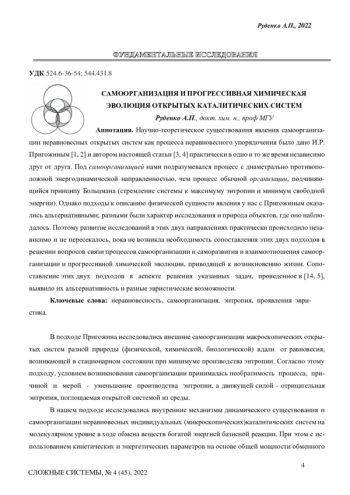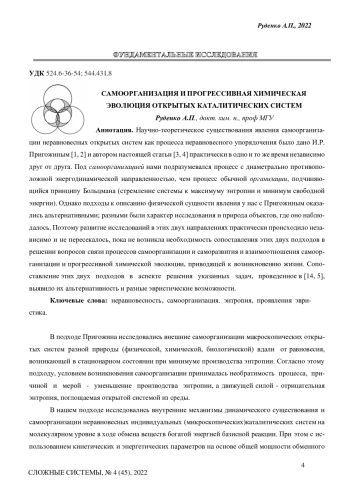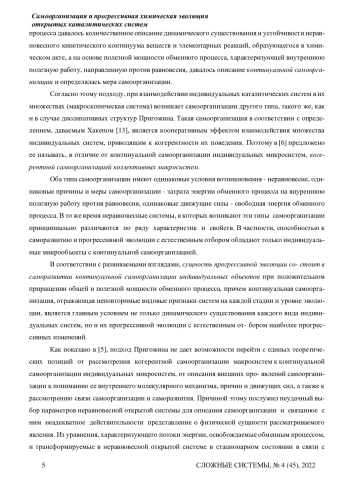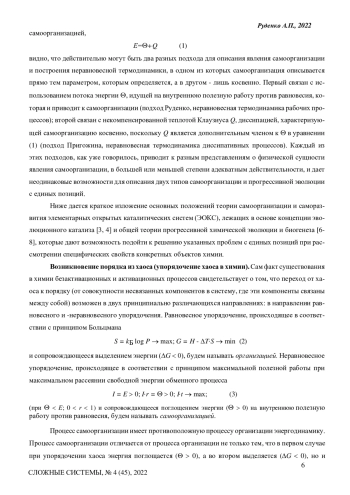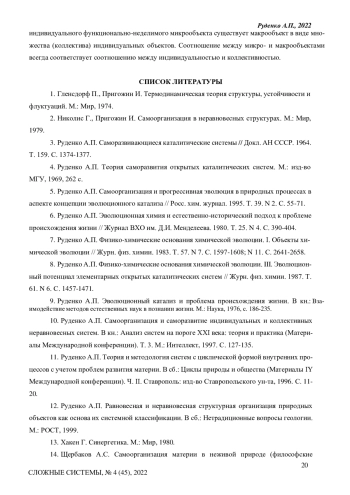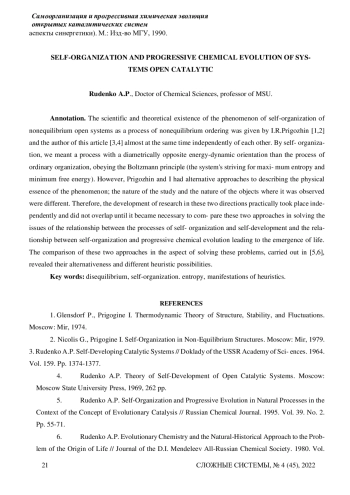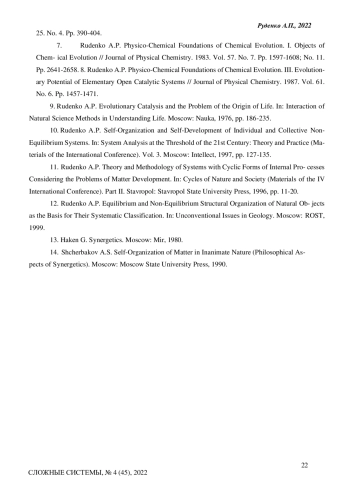Научно-теоретическое существования явления самоорганизации неравновесных открытых систем как процесса неравновесного упорядочения было дано И. Р. Пригожиным [1, 2] и автором настоящей статьи [3, 4] практически в одно и то же время независимо друг от друга. Под самоорганизацией нами подразумевался процесс с диаметрально противоположной энергодинамической направленностью, чем процесс обычной организации, подчиняющийся принципу Больцмана (стремление системы к максимуму энтропии и минимум свободной энергии). Однако подходы к описанию физической сущности явления у нас с Пригожиным оказались альтернативными; разными были характер исследования и природа объектов, где оно наблюдалось. Поэтому развитие исследований в этих двух направлениях практически происходило независимо и не пересекалось, пока не возникла необходимость сопоставления этих двух подходов в решении вопросов связи процессов самоорганизации и саморазвития и взаимоотношения самоорганизации и прогрессивной химической эволюции, приводящей к возникновению жизни. Сопоставление этих двух подходов в аспекте решения указанных задач, проведенное в [14, 5], выявило их альтернативность и разные эвристические возможности.
The scientific and theoretical existence of the phenomenon of self-organization of nonequilibrium open systems as a process of nonequilibrium ordering was given by I. R. Prigozhin [1,2] and the author of this article [3,4] almost at the same time independently of each other. By self- organization, we meant a process with a diametrically opposite energy-dynamic orientation than the process of ordinary organization, obeying the Boltzmann principle (the system’s striving for maximum entropy and minimum free energy). However, Prigozhin and I had alternative approaches to describing the physical essence of the phenomenon; the nature of the study and the nature of the objects where it was observed were different. Therefore, the development of research in these two directions practically took place independently and did not overlap until it became necessary to compare these two approaches in solving the issues of the relationship between the processes of self- organization and self-development and the relationship between self-organization and progressive chemical evolution leading to the emergence of life. The comparison of these two approaches in the aspect of solving these problems, carried out in [5,6], revealed their alternativeness and different heuristic possibilities.
